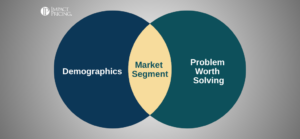You may know that I am NOT a fan of price elasticity for companies. We just experienced Black Friday, which provides a wonderful example of the danger of price elasticity.
Black Friday is the day after Thanksgiving when most people have the day off with nothing to do except go shopping. (OK, maybe that’s an exaggeration.) It’s the official start of the Christmas shopping season. The stores are all packed. Retailers offer lots of sales to ensure they get their fair share of this incredible spending spree.
Please allow me to make up some numbers to explain. I do not know the true numbers. Let’s say 5 times as many people shop on Black Friday than the same day a week earlier. Retailers, trying to get their fair share, offer big discounts. Let’s choose one item where a retailer lowers the price by 20%.
If you’re a math whiz, you’re probably ahead of me already. But if you lower your price 20% and get 5 times the number of sales, your calculated price elasticity is -25, which is HUGE for price elasticity.
Being a smart manager, if someone tells me my price elasticity is -25, I eagerly say, “lower price again. If we lower it 1%, we’ll get 25% more sales. Quick, let’s do it!”
The implication behind this price elasticity number is that lowering the price by 1 percent generates a 25% increase in sales. There is an implied causal relationship. But at least in the case of Black Friday, we know a 20% price decrease does not cause a spike in demand. The demand spike happened because it was the day after Thanksgiving.
This is one example of why you must be careful when using price elasticity. There are other nuances to price elasticity that should make you pause and think deeply if you’re using it. Many other KPIs and metrics can help to make smart pricing decisions. I’d recommend you use them instead.
Now, go make an Impact!
Tags: price, pricing, pricing strategy















